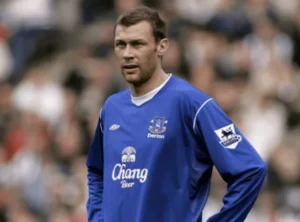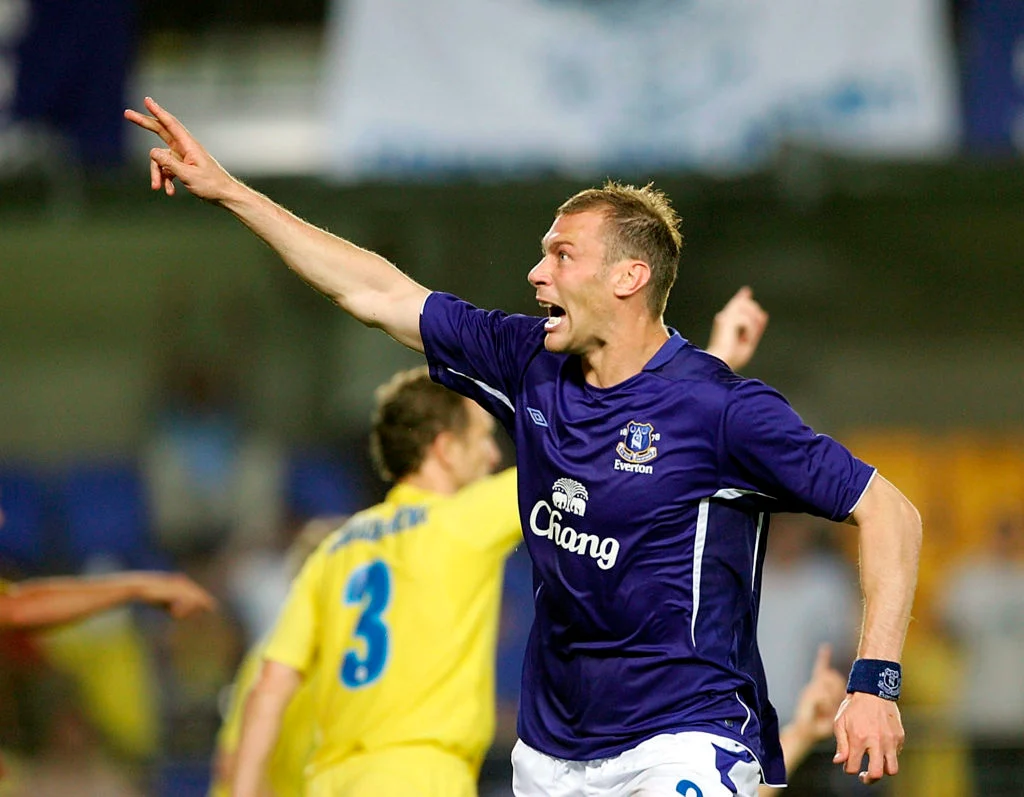A large, powerful center-forward who enjoys a battle as much as a goal has long been a favorite of Leeds United’s.
And in many respects, Duncan Ferguson still has the feel of a former Leeds United number nine.
However, Leeds didn’t stop aiming for it.
The Yorkshire giants were under pressure to fill a significant vacuum in their frontline when Lee Chapman, the fan favorite, said an emotional goodbye to life at Elland Road in 1993, just two years after leading Howard Wilkinson’s team to the final First Division title ever.
They sought to fill the gap with Duncan Ferguson, the baby-faced, curtain-haired rising star of Scottish football.
Before Duncan Ferguson joined Rangers, Leeds United had their bid accepted.
Ferguson may have been a striker at the other end of his football career, but Leeds clearly saw enough potential in the then-21-year-old to spend a club-record transfer fee. Ferguson was three inches taller than Chapman and more than ten years younger.
The late David Rocastle, who was acquired from Arsenal the year before for £2 million, was their most costly acquisition to date. Ferguson would have cost Leeds an eye-watering £3.25 million, even though he had only played professional football for Dundee United for two seasons.
Dundee United was unable to turn down the offer.
“We have reached an agreement with Leeds,” the club’s vice-chairman, Doug Smith, would reaffirm. “And from our perspective, it is between Ferguson and Leeds.”
That’s when the trouble started.

Rangers absolutely destroyed Leeds; the Glasgow powerhouses paid Ferguson a British record £4 million, and Brian Deane ultimately made the short journey from Sheffield United to Elland Road.
Additionally, Leeds seemed to have prevailed over this specific arrangement for a while at least. Deane scored 11 league goals in 1993–94, leading Leeds to fifth place. Ferguson, on the other hand, would go on to become one of the Rangers’ greatest failures, seeing just five in 25 games while wearing the iconic blue shirt.
Following Leeds’ hiring of George Graham, Brian Deane struggled.
Of course, Ferguson’s career will be remembered for much more than his disastrous time at Ibrox thanks to a stellar stint at Everton.
In retrospect, a man who is more commonly referred to as “Big Dunc” in football lingo may have had comparatively few regrets regarding that unsuccessful move to Leeds.
From 1996 to 1998, leading the line for a George Graham squad was as much joy as removing teeth without the comfort of an anesthetic, as the aforementioned Deane would later relate.
Speaking to Planet Football, Deane recalled the season when Leeds managed to score 28 goals in 38 league games, saying, “It was tough.”
Sometimes we had six center-halves when we got out there. We had seven at times. George taught me a lot since he made us extremely difficult to beat and focused on establishing stability in the team when he took over.
However, I personally embraced it as a forward. Being the top scorer with so few goals was just annoying.
Leeds is finding it much easier to score goals now that they are back in the modern era. On Tuesday night, Daniel Farke’s “unplayable” frontline destroyed Watford, extending their lead in the Championship by five points.
Brian Deane has steadfastly supported Farke, the manager of Leeds. Additionally, Deane’s and the more patient Elland Road supporters’ trust appears to be paying off as a return to the Premier League grows increasingly possible.
